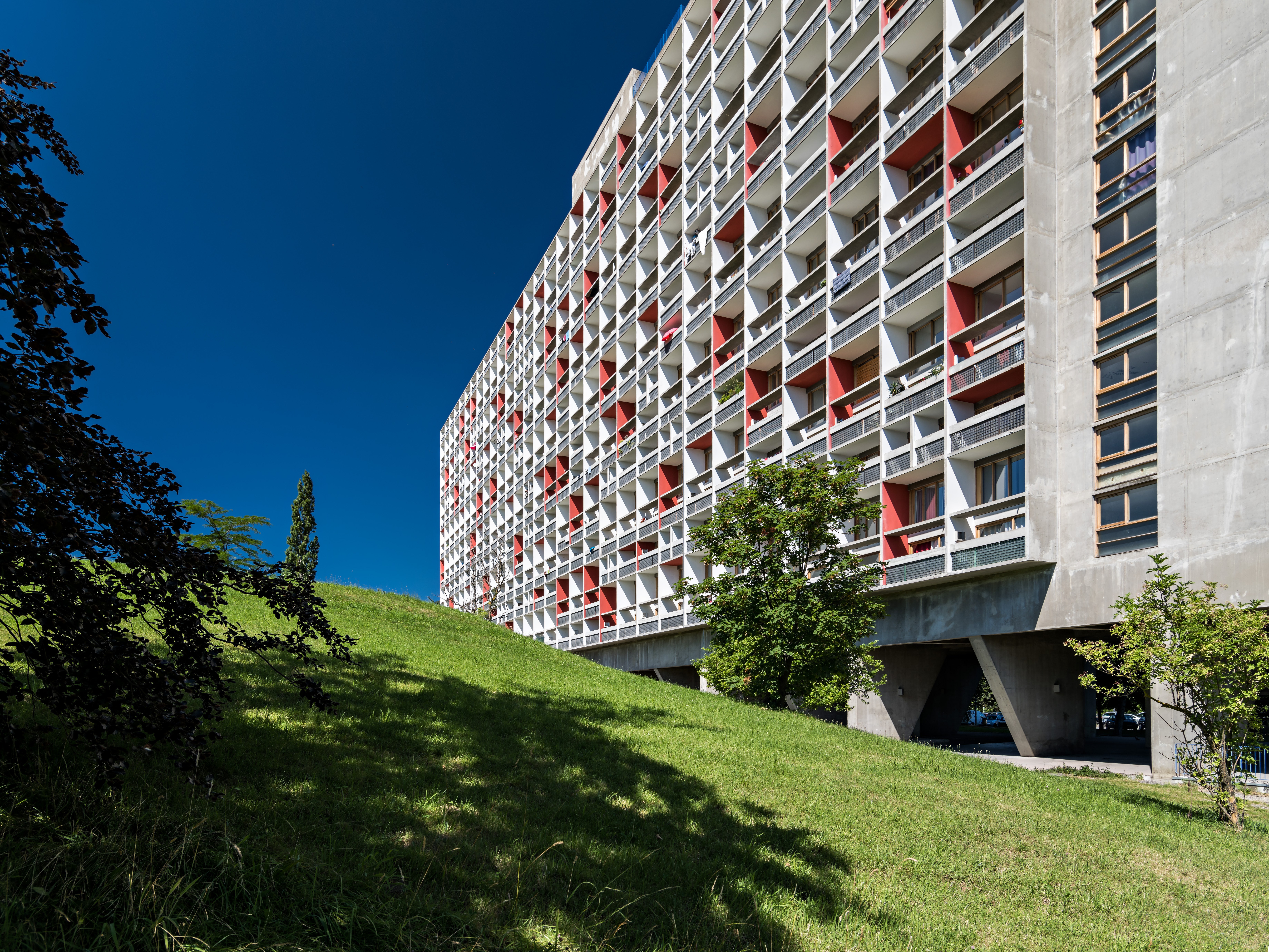

The building is raised up off the ground on chunky concrete piloti, and its long elevations comprise a series of balconies and deep-set windows that create a strong visual grid.

This was a matter of expediency, since a steel frame would have been too expensive considering post-WW2 material shortages, but subsequently became a design staple of Brutalism. The building is situated at the centre of a large urban park, and is 165 m long and 56 m high.ĭeparting from his trademark smooth white surfaces, Le Corbusier chose to construct the building in beton brut (rough-cast concrete), textured by the timber formwork. In so doing, it redefined high- density housing by creating a self-contained 18- storey block structured like an ocean liner. Indeed, the building is often credited as being the initial inspiration behind the architectural style of Brutalism.īuilt between 19, the design applied Le Corbusier’s famous dictum that a house was a ‘machine for living in’, to an entire community. Located in Marseille, France, Cite Radieuse is arguably the most influential Brutalist building of all time, and is considered one of Le Corbusier’s most famous and successful works. When designing for such a significant number of inhabitants natural instinct is to design horizontally spreading out over the landscape, rather Le Corbusier designed the community that one would encounter in a neighborhood within a mixed use, modernist, residential high rise.Īll 25 / Amsterdam 0 / Atlanta 0 / Barcelona 0 / Beijing 0 / Berlin 0 / Boston 0 / Chicago 0 / Cities 1 / Classic 0 / Classic 0 / Classic 0 / Classic 0 / Classic 1 / Classic 0 / Classic 0 / Classic 0 / Classic 0 / Classic 0 / Classic 0 / Classic 0 / Classic 0 / Classic 1 / Classic 0 / Classic 0 / Classic 0 / Classic 0 / Classic 0 / Classic 0 / Classic 0 / Classic 0 / Classic 0 / Classic 0 / Classic 0 / Classic 0 / Classic 0 / Classic 0 / Classic 0 / Classic 0 / Classic 2 / Classic 0 / Classic 0 / Classic 0 / Classic 0 / Classic 0 / Copenhagen 0 / Hamburg 0 / Helsinki 0 / Hong Kong 0 / Landmark 0 / Landmark 0 / Landmark 0 / Landmark 1 / Landmark 0 / Landmark 0 / Landmark 1 / Landmark 0 / Landmark 0 / Landmark 0 / Landmark 0 / Landmark 0 / Landmark 0 / Landmark 0 / Landmark 0 / Landmark 1 / Landmark 0 / Landmark 0 / Landmark 0 / Landmark 1 / Landmark 0 / Landmark 1 / Landmark 0 / Landmark 0 / Landmark 0 / Landmark 0 / Landmark 0 / Landmark 0 / Landmark 0 / Landmark 0 / Landmark 1 / Landmark 0 / Landmark 0 / Landmark 0 / Landmark 0 / Landmark 1 / Lisbon 0 / London 0 / Los Angeles 0 / Lyon 0 / Madrid 0 / Marseille 0 / Melbourne 0 / Milan 0 / Munich 0 / New York City 0 / Oslo 0 / Paris 0 / Perth 0 / Portland 0 / Porto 0 / Prague 0 / Projects 0 / Recent 0 / Recent 1 / Recent 0 / Recent 0 / Recent 1 / Recent 0 / Recent 1 / Recent 0 / Recent 1 / Recent 1 / Recent 0 / Recent 0 / Recent 0 / Recent 0 / Recent 0 / Recent 1 / Recent 2 / Recent 0 / Recent 0 / Recent 0 / Recent 0 / Recent 0 / Recent 1 / Recent 0 / Recent 0 / Recent 1 / Recent 0 / Recent 0 / Recent 0 / Recent 0 / Recent 3 / Recent 0 / Recent 0 / Recent 0 / Recent 0 / Recent 0 / Rome 0 / Rotterdam 0 / Seattle 0 / Shanghai 0 / Sport 0 / Stories 0 / Switzerland 0 / Sydney 0 / Tokyo 1 / Uncategorized 0 / Vienna 0 / Washington D.C.Cite Radieuse (Radiant City), is a high- density residential development, characteristic of the Unite d’habitation concept design developed by Le Corbusier. Especially since Le Corbusier did not have many buildings of such a substantial scale when compared to the villas. Completed in 1952, the Unite d’ Habitation was the first of a new housing project series for Le Corbusier that focused on communal living for all the inhabitants to shop, play, live, and come together in a “vertical garden city.” The Unite d’Habitation was a first, both for Le Corbusier and the ways in which to approach such a large complex to accommodate roughly 1,600 residents. In 1947, Europe was still feeling the effects of the Second World War, when Le Corbusier was commissioned to design a multi-family residential housing project for the people of Marseille that were dislocated after the bombings on France. The Unite d’Habitation in Marseille, France was the first large scale project for the famed architect, Le Corbusier.


After World War II, the need for housing was at an unprecedented high.


 0 kommentar(er)
0 kommentar(er)
